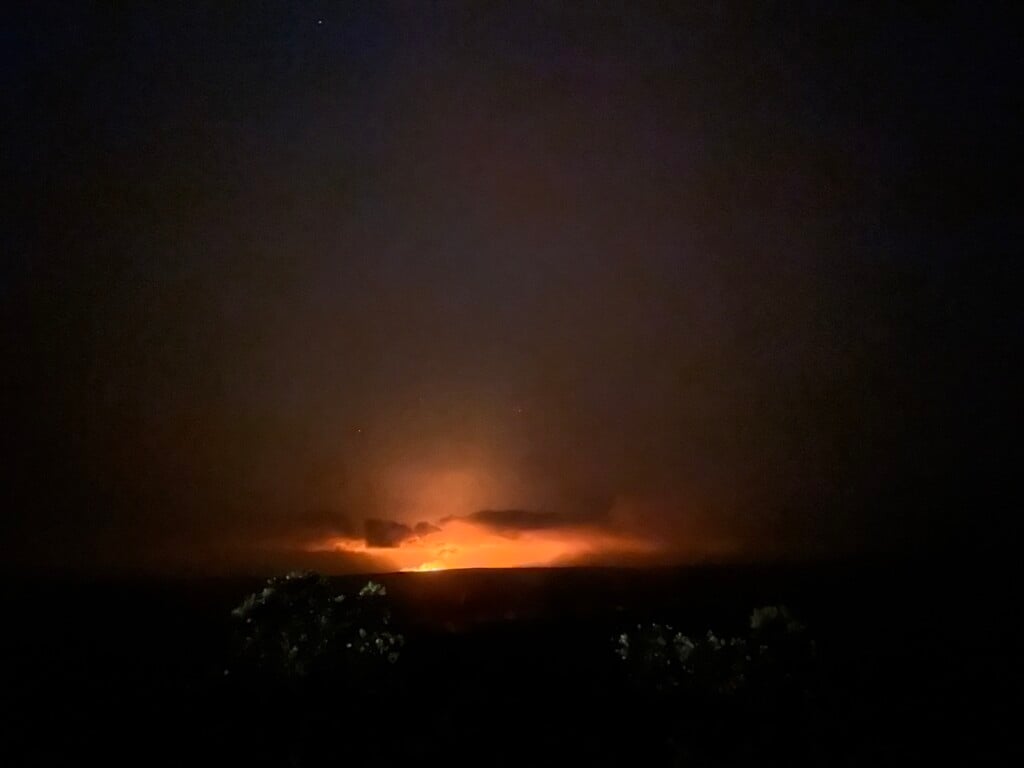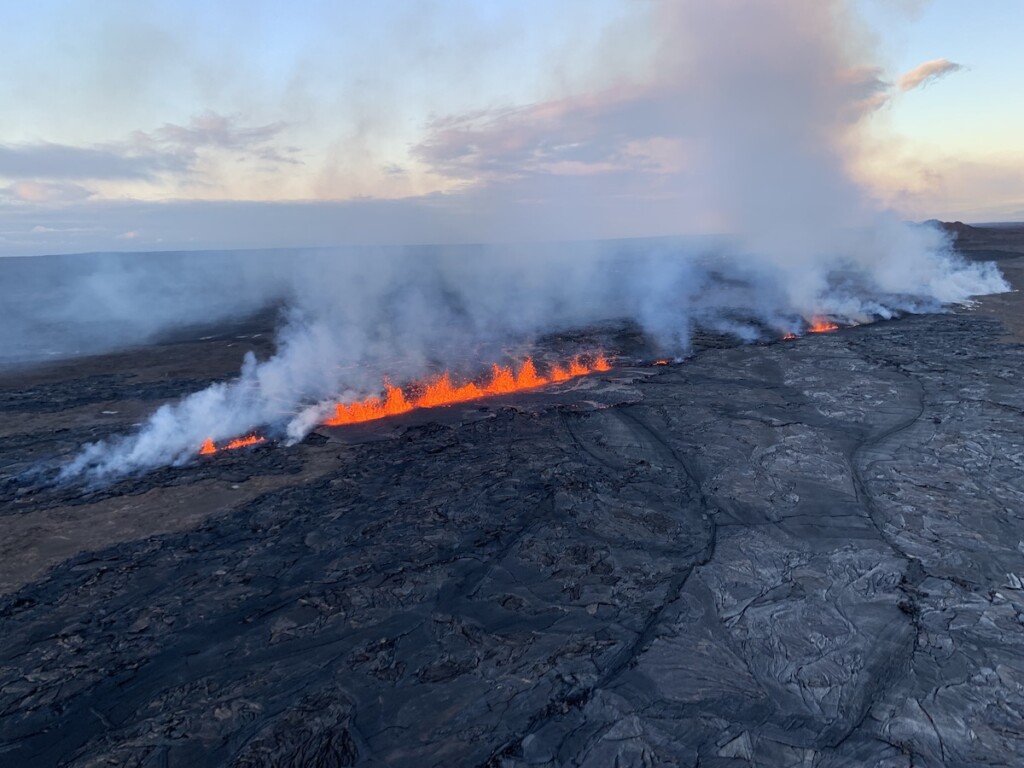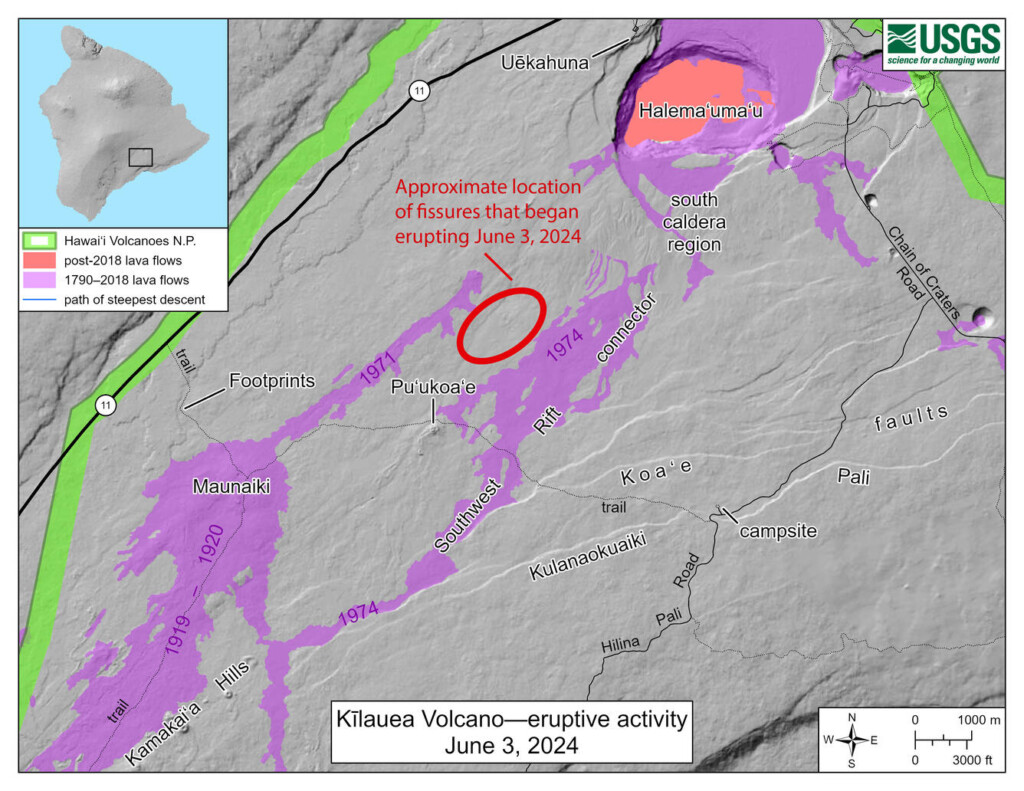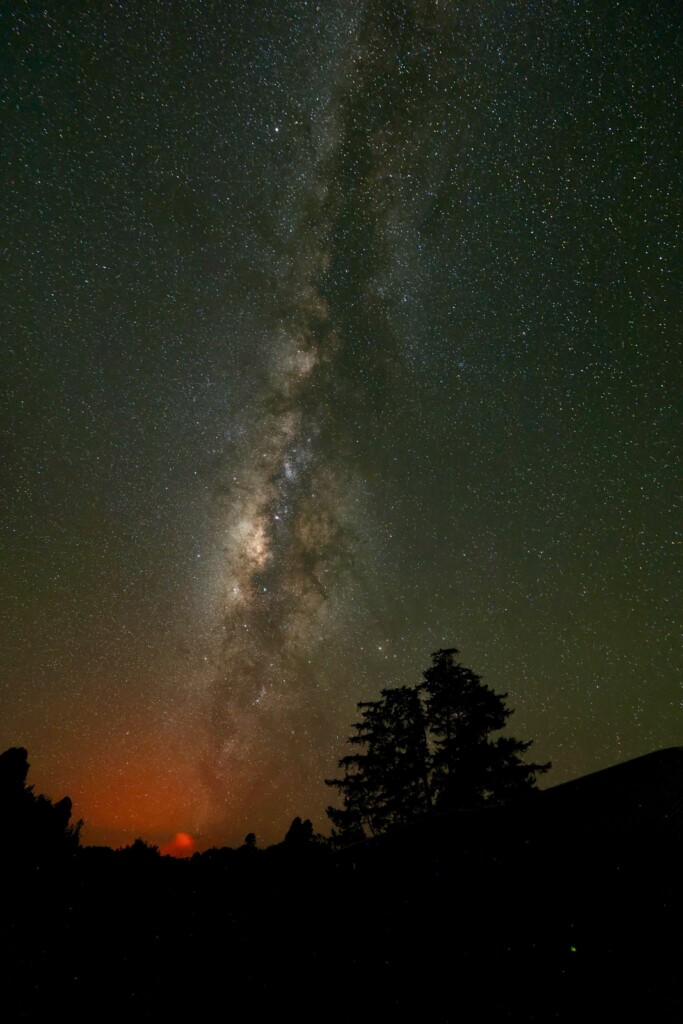Kīlauea Volcano Eruption ‘Paused’ on Hawaiʻi Island
The most active volcano in Hawaiʻi erupted just after midnight on June 3, then paused 12 hours later.

Updated 1 p.m. June 4, 2024
The eruption of Kīlauea on Hawaiʻi Island that begin just after midnight on June 3 has paused after 12 hours.

Lava fountains from the June 3, 2024 fissure eruption in Kīlauea’s Southwest Rift Zone were estimated to have reached as high as 20 meters (66 feet), with an average height of 10 meters (33 feet).
Photo: Courtesy of the U.S. Geological Survery/Drew Downs (HVO)
In an update, the U.S. Geological Survey said lava flows were sluggish and then ceased moving around 12:30 p.m. HST Monday. However, you could still detect a lava glow and elevated volcanic gas emissions. The agency also downgraded its alert level from a warning to a watch.
“Fissure eruptions are often short-lived but can be difficult to forecast,” the USGS reported. “They can display pauses of hours to days.”
June 3, 2024
Kīlauea is erupting again.
This new eruption began just after midnight—12:30 a.m. HST—on June 3, 2024 in a remote area southwest of the summit caldera on Hawaiʻi Island. Because of its location—this is an unusual place for an eruption—the best and safest viewing is from Uēkahuna at this time. There is no immediate danger to residents.

This reference map depicts the approximate location of fissure vents that began erupting from Kīlauea Southwest Rift Zone at approximately 12:30 a.m. HST on June 3, 2024. The most recent eruption in this region was during December 1974, which lasted only about 6 hours. At this time, it is not possible to say how long the eruption will last.
This new eruption comes as the area had been experiencing earthquakes and general volcanic unrest. Yesterday Hawaiʻi Volcanoes National Park had closed the Devastation Trail parking lot and Keanakākoʻi.
It began at 12:30 a.m. EST, with magma rising from beneath the surface and “fountaining” up through cracks, the United States Geological Survey said.
Live view from Halemaʻumaʻu crater from the northwest rim of the caldera, looking at current activity.
Glow is visible in webcam imagery (above), indicating that lava is currently erupting from fissures. The most recent eruption in this region was during December 1974, which lasted only about six hours. At this time, it is not possible to say how long the eruption will last.
The Hawaiian Volcano Observatory will continue to closely monitor Kīlauea for signs of increasing or decreasing activity. Should volcanic activity change significantly, a new Volcanic Activity Notice will be issued. Currently, the alert level is red for warning.

During the early morning hours of June 3, 2024, the night sky was illuminated by the glow of new eruption south of Kīlauea summit caldera. In this image, taken with a prolonged exposure time, the Milky Way is also visible.
Photo: Courtesy of the USGS/D.A. Phillips.
In 2023, Kilauea erupted in January, June and September. A major eruption in 2018 destroyed 700 homes and destroyed areas in the national park.
Stay tuned for more updates.


